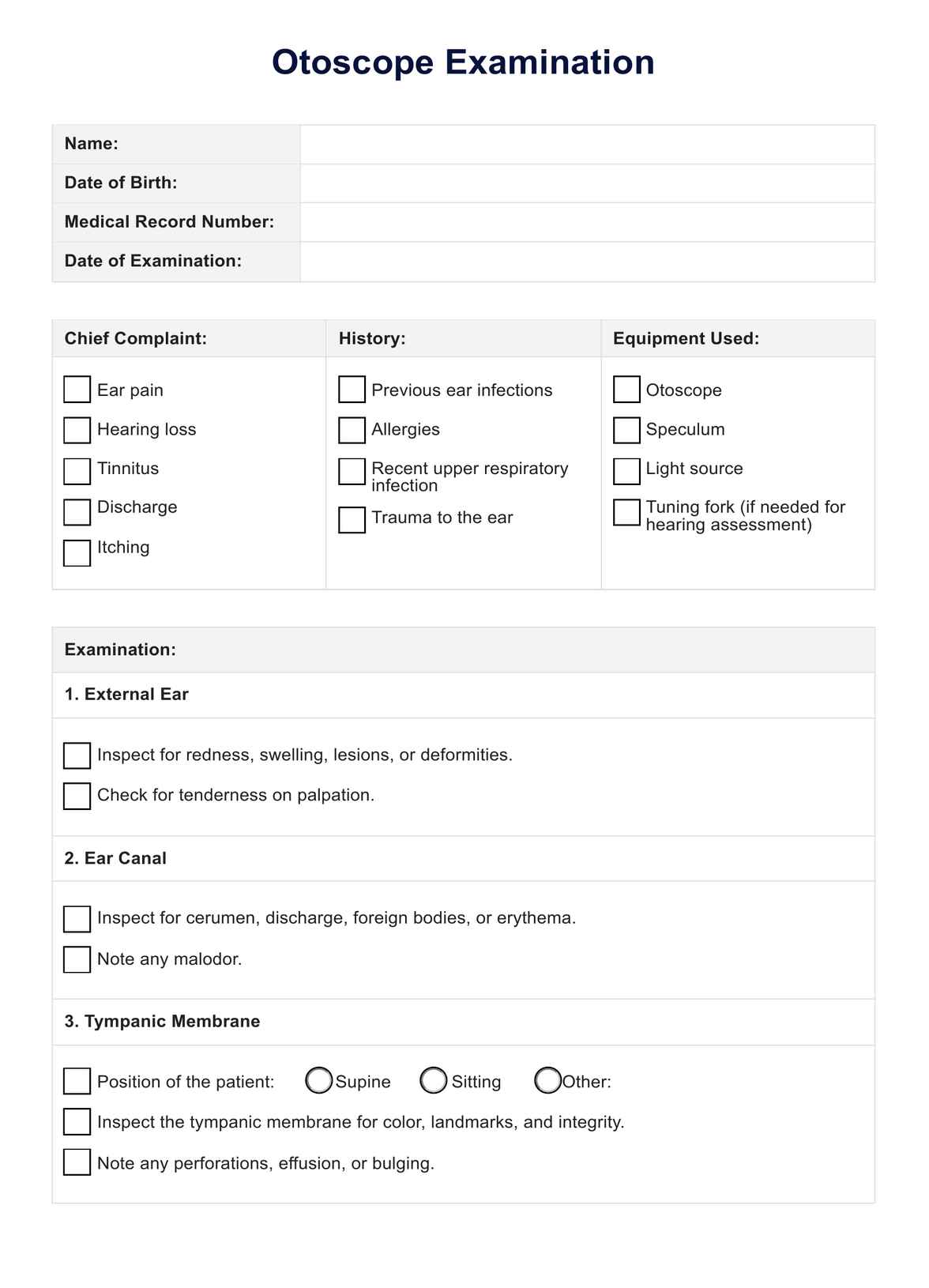In an otoscope, you should see a clear view of the ear canal and the tympanic membrane (eardrum). The ear canal should appear healthy without signs of redness, swelling, or blockages, and the tympanic membrane should be intact and translucent.

Otoscope Examination
Learn how to perform an otoscope examination and see an example with our Carepatron's free PDF download.
Use Template
Otoscope Examination Template
Commonly asked questions
An ear infection through an otoscope may present redness, inflammation, and a cloudy tympanic membrane appearance. Pus or fluid accumulation behind the eardrum may also be visible, indicating an infection that requires further assessment and treatment.
EHR and practice management software
Get started for free
*No credit card required
Free
$0/usd
Unlimited clients
Telehealth
1GB of storage
Client portal text
Automated billing and online payments











